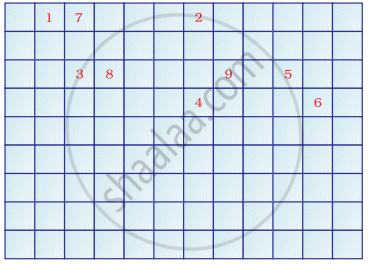Advertisements
Advertisements
Question
Atoms of eight elements A, B, C, D, E, F, G and H have the same number of electron shells but different number of electrons in their outermost shells. It was found that elements A and G combine to form an ionic compound. This ionic compound is added in a small amount to almost all vegetables and dishes during cooking. Oxides of elements A and B are basis in nature while those of elements E and F acidic. The oxide of element D is, however, almost neutral. Based on the above information, answer the following questions:
(a) To which group or period of the periodic table do these elements belong?
(b) What would be the nature of compound formed by a combination of elements B and F?
(c) Which two of these elements could definitely be metals?
(d) Which one of the eight elements is most likely to be found in gaseous state at room temperature?
(e) If the number of electrons in the outermost shell of elements C and G be 3 and 7 respectively, write formula of the compound formed by the combination of C and G.
Solution
(a) The elements belong to the third period of the periodic table, and have the same number of electron shells but different number of electrons in their outermost shells. The number of valence electrons in these elements increases from 1 to 8, on moving from left to right in this period.
(b) When metal B combines with a non-metal F, an ionic compound is formed due to the transfer of electrons from the metal to the non-metal. This is because in the third period, elements A, B and C are metals, D is a metalliod, and E, F, G and H are non-metals.
(c) A and B are definitely metals because in the 3rd period, at the extreme left, only metals are placed in the periodic table .
(d) The element H is most likely to be found in a gaseous state at room temperature. This is because the last group elements in the periodic table are all in a gaseous state at room tempearture.
(e) If the number of valence electrons of element C is 3 and those of element G is 7, then 1 atom of element C will combine with 3 atoms of element G to form a compound with the formula CG3.
RELATED QUESTIONS
The element which forms a basis oxide has the atomic number of:
(a) 18
(b) 17
(c) 14
(d) 19
An element X is in group 2 of the periodic table What will be the formula of its chloride?
An element X from group 2 of the periodic table reacts with an element Y from group 17 to form a compound.
(a) What is the nature of the compound formed?
(b) State whether the compound formed will conduct electricity or not.
(c) Give the formula of the compound formed.
(d) What is the valency of element X?
(e) How many electrons are there in the outermost shell of an atom of element Y?
The elements A, B and C belong to groups 1, 14, and 17 respectively of the periodic table.
(a) Which two elements will form a covalent compound?
(b) Which two elements will form an ionic compound?
The basis of the classifications proposed by Dobereiner, Newlands and Mendeleev was ______.
Moseley’s periodic table is based on atomic mass.
What property forms the basis of identification?
An atom of an element has the electronic configuration 2,8,2. To which group does it belong?
Complete the following cross word puzzle
Across:
(1) An element with atomic number 12.
(3) Metal used in making cans and member of Group 14.
(4) A lustrous non-metal which has 7 electrons in its outermost shell.
Down:
(2) Highly reactive and soft metal which imparts yellow colour when subjected to flame and is kept in kerosene.
(5) The first element of second Period
(6) An element which is used in making fluorescent bulbs and is second member of Group 18 in the Modern Periodic Table
(7) A radioactive element which is the last member of halogen family.
(8) Metal which is an important constituent of steel and forms rust when exposed to moist air.
(9) The first metalloid in Modern Periodic Table whose fibres are used in making bullet-proof vests

The atomic number of an element 'X' is 11.
- Write the electronic configuration of X and find its valency.
- Write the formula and nature of its oxide.
